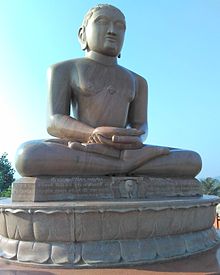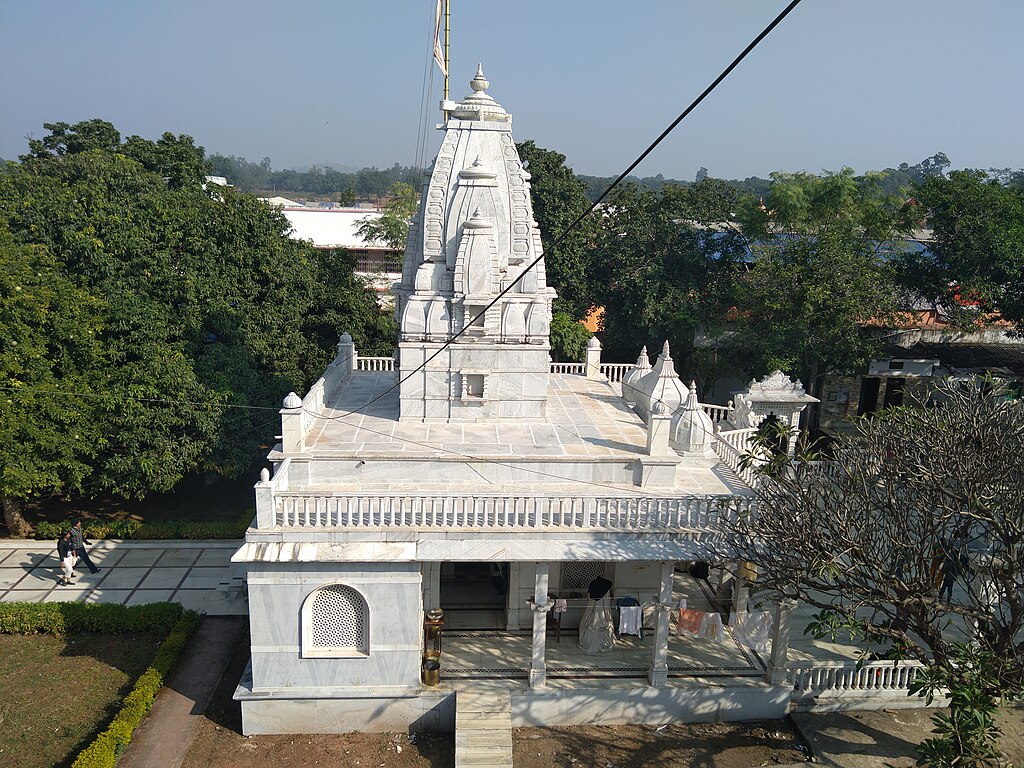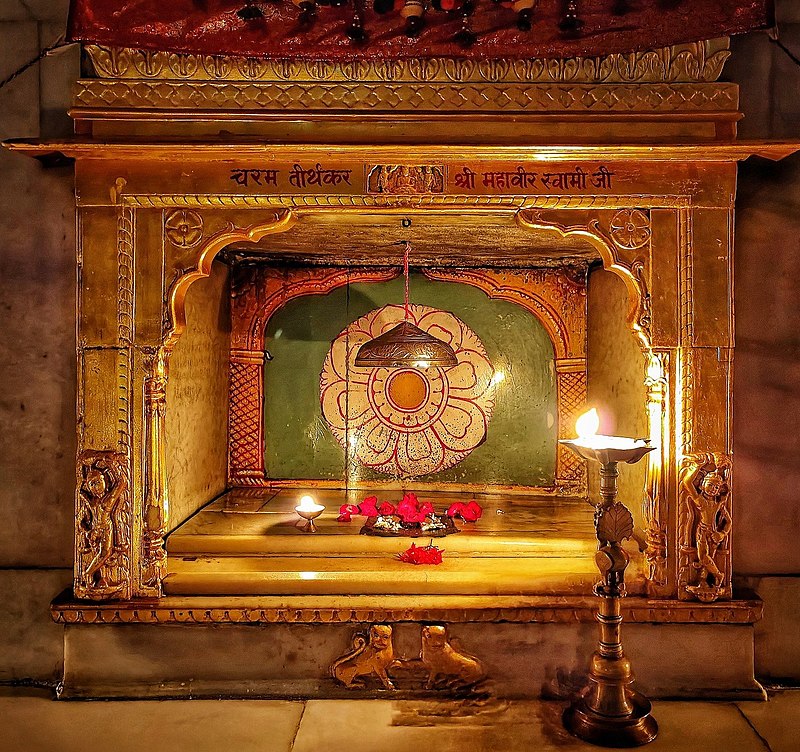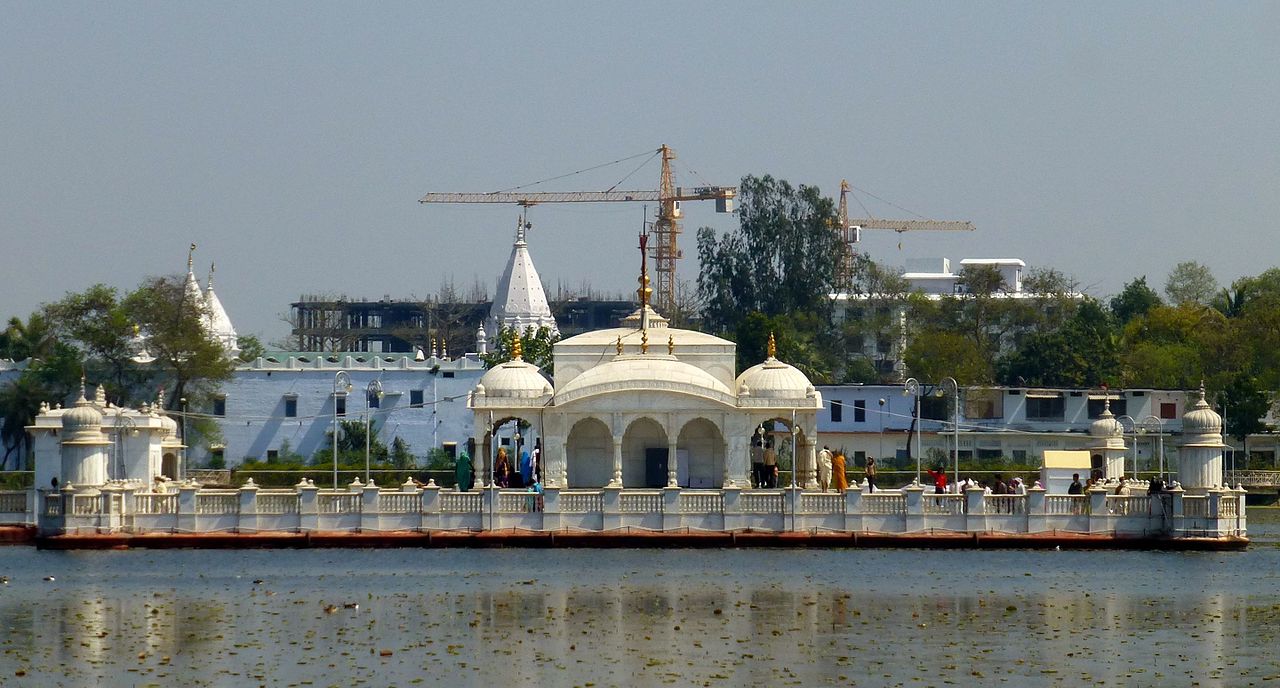Mahavira (Devanagari: महावीर, Mahāvīra), also known as Vardhamana (Devanagari: वर्धमान, Vardhamāna), was the 24th Tirthankara (supreme preacher) of Jainism. He was the spiritual successor of the 23rd Tirthankara Parshvanatha. Mahavira was born in the early 6th century BCE into a royal Jain family of ancient India. His mother’s name was Trishala and his father’s name was Siddhartha. They were lay devotees of Parshvanatha. Mahavira abandoned all worldly possessions at the age of about 30 and left home in pursuit of spiritual awakening, becoming an ascetic. Mahavira practiced intense meditation and severe austerities for twelve and a half years, after which he attained Kevala Jnana (omniscience). He preached for 30 years and attained moksha (liberation) in the 6th century BCE, although the year varies by sect.
Mahavira taught that observance of the vows of ahimsa (non-violence), satya (truth), asteya (non-stealing), brahmacharya (chastity), and aparigraha (non-attachment) are necessary for spiritual liberation. He taught the principles of Anekantavada (many-sided reality): syadvada and nayavada. Mahavira’s teachings were compiled by Indrabhuti Gautama (his chief disciple) as the Jain Agamas. The texts, transmitted orally by Jain monks, are believed to have been largely lost by about the 1st century CE.
Mahavira is usually depicted in a sitting or standing meditative posture, with the symbol of a lion beneath him. His earliest iconography is from archaeological sites in the North Indian city of Mathura, and is dated from between the 1st century BCE and the 2nd century CE. His birth is celebrated as Mahavir Janma Kalyanak and his nirvana (salvation) and also his first shishya of Gautama Swami is observed by Jains as Diwali.
Historically, Mahavira, who revived and preached Jainism in ancient India, was an older contemporary of Gautama Buddha. Jains celebrate Mahavir Janma Kalyanak every year on the 13th day of the Indian Calendar month of Chaitra.
Names and epithets
Surviving early Jain and Buddhist literature uses several names (or epithets) for Mahavira, including Nayaputta, Muni, Samana, Nigantha, Brahman, and Bhagavan. In early Buddhist sutras, he is referred to as Araha (“worthy”) and Veyavi (derived from “Vedas”, but meaning “wise”). He is known as Sramana in the Kalpa Sūtra, “devoid of love and hate”.
According to later Jain texts, Mahavira’s childhood name was Vardhamāna (“the one who grows”) because of the kingdom’s prosperity at the time of his birth. According to the Kalpasutras, he was called Mahavira (“the great hero”) by the gods in the Kalpa Sūtra because he remained steadfast in the midst of dangers, fears, hardships and calamities. He is also known as a tirthankara.
Historical Mahavira
Map of India during the 6th century BCE
Ancient kingdoms and cities of India at the time of Mahavira
It is universally accepted by scholars of Jainism that Mahavira lived in ancient India. According to the Digambara Uttarapurana text, Mahavira was born in Kundalpur in the Kingdom of the Videhas; the Śvētāmbara Kalpa Sūtra uses the name “Kundagrama”, said to be located in present-day Bihar, India. Although it is thought to be the town of Basu Kund, about 60 kilometres (37 miles) north of Patna (the capital of Bihar), his birthplace remains a subject of dispute. Mahavira renounced his material wealth and left home when he was twenty-eight, by some accounts (thirty by others), lived an ascetic life for twelve and a half years in which he did not even sit for a time, attained Kevalgyana and then preached Dharma for thirty years. Where he preached has been a subject of disagreement between the two major traditions of Jainism: Śvētāmbara and Digambara traditions.
It is uncertain when Mahavira was born and when he died. One view is that Mahavira was born in 540 BCE and died in 443 BCE. The Barli Inscription in Prakrit language which was inscribed in 443 BCE (year 84 of the Vira Nirvana Samvat), contains the line Viraya Bhagavate chaturasiti vase, which can be interpreted as “dedicated to Lord Vira in his 84th year”, 84 years after the Nirvana of the Mahavira. However, palaeographic analysis dates the inscription to the 2nd-1st century BCE. According to Buddhist and Jain texts, Buddha and Mahavira are believed to have been contemporaries which is supported by much ancient Buddhist literature.
A firmly-established part of the Jain tradition is that the Vira Nirvana Samvat era began in 527 BCE (with Mahavira’s nirvana). The 12th-century Jain scholar Hemachandracharya placed Mahavira in the 6th century BCE. According to Jain tradition, the traditional date of 527 BCE is accurate; the Buddha was younger than Mahavira and “might have attained nirvana a few years later”. The place of his nirvana, Pavapuri in present-day Bihar, is a pilgrimage site for Jains.
Ahinsa Sthal
Butterfly Park, Qila Rai Pithora, Sainik Farm, New Delhi, Delhi 110016


















Reviews
There are no reviews yet